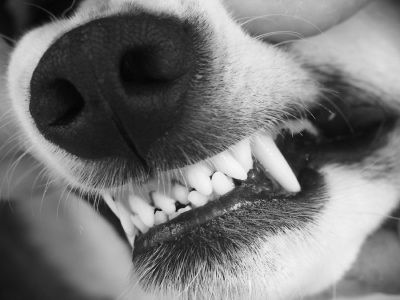Latest figures from the RSPCA show an almost 25% increase in the number of people convicted of animal cruelty and neglect in England and Wales last year, and a 13 per cent increase in the number of calls to the society. Over a thousand people were convicted in 2011 (1,341) while over a million and a quarter calls (1,314,795) were received.
The likely scale of animal abuse in England and Wales is much higher. As with other forms of crime, only a percentage of the total amount of abuse is likely to be reported to official agencies while a larger amount of crime that is known to those involved will be kept secret and dealt with (which sometimes means covered up) within the family. Criminologists refer to this as the ‘dark figure’ of crime; the offending that takes place with the full knowledge of victims and witnesses but which is rarely revealed to criminal justice agencies except on those occasions when questions are directly asked through victim surveys and other crime audits.
The rising levels of both convictions and calls are significant because animal abuse has societal implications beyond the direct harm caused to the animals involved. The reality of animal abuse is that much of its investigation and prosecution is still carried out by NGOs like the RSPCA rather than mainstream criminal justice agencies, despite the fact that animal abuse constitutes criminal behaviour.
Researchers in the US and UK have determined that there are clear links between animal abuse and other forms of interpersonal violence, to the extent that many of those who begin by abusing animals go on to commit crimes against humans. In a landmark 1963 article in the American Journal of Psychiatry, Macdonald identified three specific behavioural characteristics associated with sociopathic behaviour; animal cruelty, obsession with fire starting and bedwetting (past age five).
The ‘MacDonald Triad’ was instrumental in linking these activities to violent behaviours, particularly homicide; identifying cruelty to animals as a possible indicator of future violent behaviour. Subsequent studies have confirmed that cruelty to animals is a common behaviour in children and adolescents who grow up to become violent criminals and, in the case of adults who abuse animals, it can indicate a violent or abusive family dynamic, where harm is inflicted on weaker or more vulnerable family members who may be unable to defend themselves. In some circumstances, acts of animal abuse are used to intimidate, control or coerce women and children within an abusive relationship either to accede to a perpetrator’s demands or desires or to keep silent about the abuse they are suffering.
The neglect or harm inherent in animal abuse so frequently occurs in the abuse of other family members to the extent that where animal abuse occurs it is more likely that other forms of abuse will also be happening. For example, American research published in 1997 which sampled around 50 battered women’s shelters found that 84% of the shelters confirmed that women who came to the shelters talked about incidents of pet abuse, 63% confirmed that children who came to the shelters talked about pet abuse and 83% of the shelters confirmed the coexistence of domestic abuse and pet abuse. Other researchers have drawn similar conclusions and the American researchers also found that some women experiencing domestic abuse were reluctant to leave the family home in those cases where a shelter was unable to take a pet, as this would mean leaving a vulnerable companion animal behind to suffer further abuse. As Mumsnet and the Women’s Alliance were reported as saying in The Guardian recently, the vast majority of women suffering domestic violence do not go into refuges and for many it is a last resort. Thus in the context of the current provisions of the Legal Aid and Sentencing Bill that would seemingly prevent women who have not sought ‘refuge’ from receiving legal aid, animal abuse is clearly a justice gap issue.
Yet despite the evidence of a growing body of research that consistently shows clear links between animal abuse and other forms of domestic abuse such as spousal or child abuse, animal abuse continues to be seen as an animal welfare problem, at least in the UK. In launching these figures, the RSPCA describes itself as stretched to ‘breaking point’ in dealing with the volume of calls and cases it receives and remains the lead prosecutor in animal welfare and abuse cases. Yet given that animal abuse serves as an indicator for criminal justice and social welfare organisations that other forms of harm may be present it is surely time for it to be seen as part of mainstream criminal justice by the courts, the police and the public.



